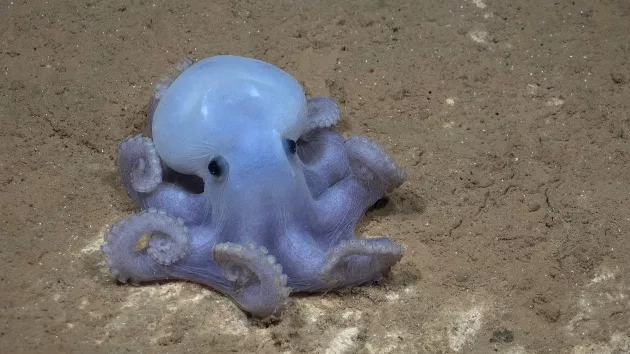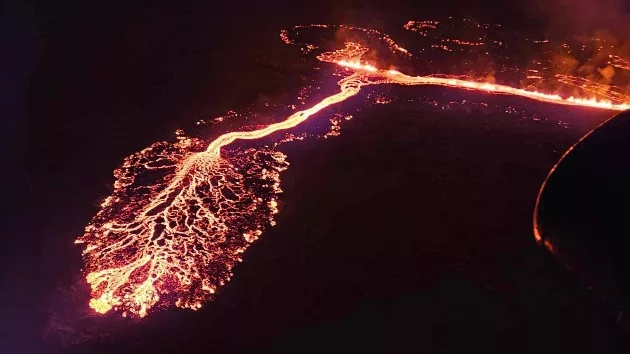
(NEW YORK) — Scientists have identified several new marine species in a pristine underwater ecosystem recently discovered in international waters — and they expect to find more.
Modern technology that allows for deep-water exploration more accurately than ever before made way for the findings of the Nazca Ridge, a new seamount in international waters about 900 miles off the coast of Chile in the Southeastern Pacific, Jyotika Virmani, executive director of the Schmidt Ocean Institute, told ABC News.
The underwater mountain is nearly 2 miles tall and supports a thriving deep-sea ecosystem, including a pristine coral garden the size of three tennis courts as well as a sponge garden, Virmani said.
Researchers aboard the Falkor, a state-of-the-art research vessel, used a remotely operated vehicle named SuBastian to collect images and samples during deep sea exploration with much greater accuracy and success than the satellite imagery used in the past to map the sea floor, Virmani said.
Some of the new species discovered include anemones, urchins, corals, some shrimp and a squat lobster, Virmani said.
Fossilized whale bones may also lead to the discovery of a new species of ancient whale, she added.
The expedition also produced the first-ever recording of the rare and enigmatic Promachoteuthis squid.
The pristine ecosystem is so far from any coastline that it appears almost untouched by pollution, Virmani said. The region is a high-priority area for international marine protection and has been earmarked to potentially be one of the first high-seas marine protected areas due to the enormous biodiversity and the unusual geology — as well as the unique physical and chemical characteristics for that part of the world, she said.
The Falkor sails around the world, gathering data to create a detailed map of the sea floor.
Previous expeditions to the Salas y Gómez and Nazca Ridges in January and February documented over 150 previously unknown species and numerous range extensions for animals not previously known to live on the ridge, the researchers said.
Previous satellite data detected the presence of the Nazca Ridge, but it was off by about 700 meters, or about .43 miles, and there was no indication of how tall it was, Virmani said. Another 25 previously unknown seamounts have also been found in the region — some of which have shown volcanic activity.
“It’s an area where multiple plates — tectonic plates — meet, so mountain chains are formed,” Virmani said.
Currently, about 26% of the ocean floor has been mapped to a high resolution, Virmani said.
“We’re working towards full map of the sea floor,” she said. “…That would be the first time in human history we know what our planet’s shape actually is.”
The findings are incredibly important for the understanding of ocean life in the bathypelagic zone, which lies between 1,000 and 4,000 meters deep and is the largest animal habitat on Earth, the researchers said.
Virmani expects scientists will continue to discover new marine species as in-depth study of the ocean continues.
“Every time we go out to the ocean, we find something new,” she said. “So it’s almost like we expect to find something every time we go out. I think we’d be disappointed if we didn’t.”
Copyright © 2024, ABC Audio. All rights reserved.








